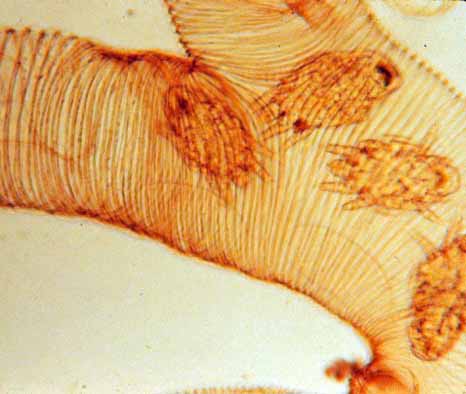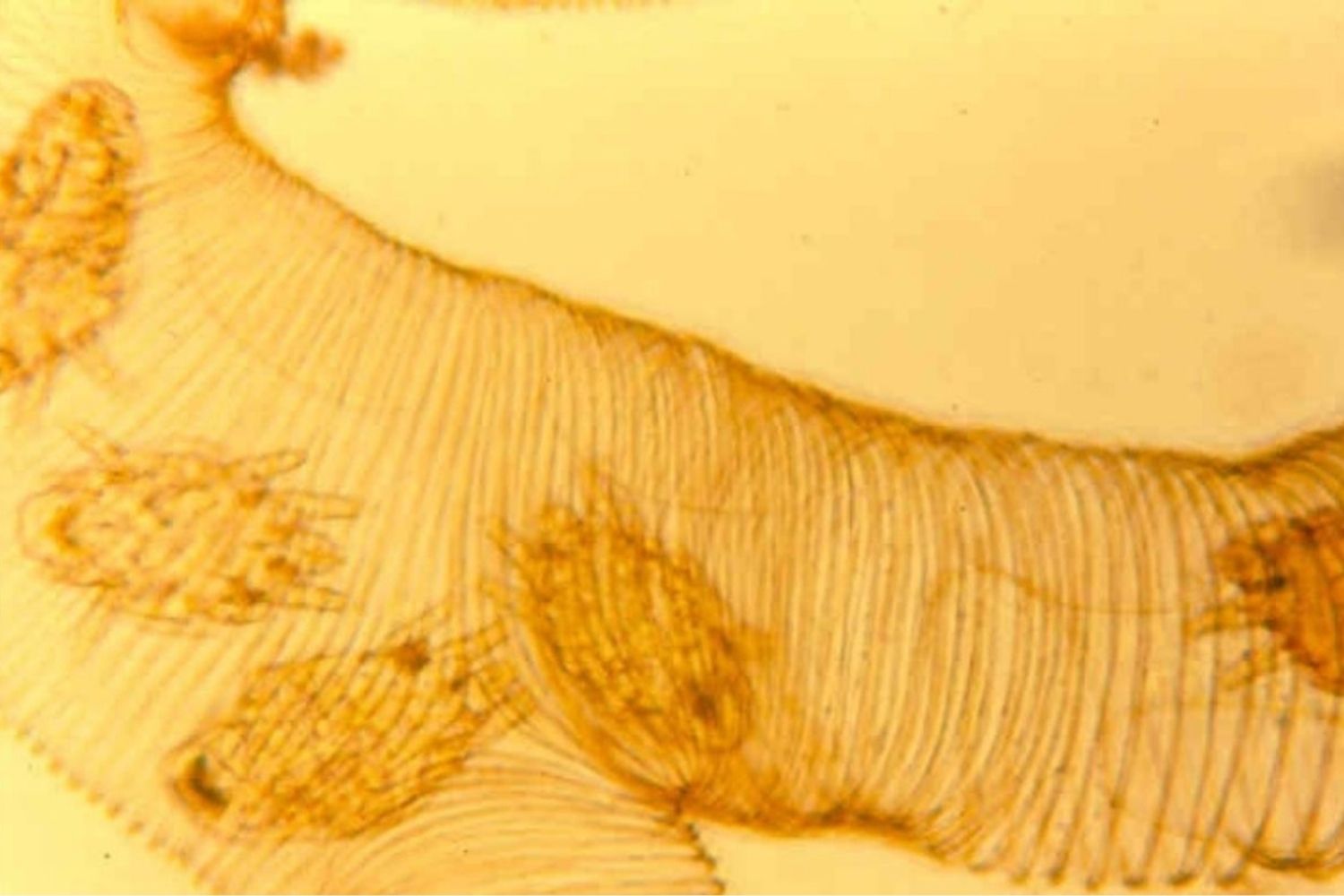An Introduction to Tracheal Mites: Essential Beekeeping Guide
Tracheal mites are tiny parasites. They affect the respiratory system of honeybees.
These mites can cause serious problems for bee colonies. Understanding them is crucial for beekeepers. Tracheal mites live inside the breathing tubes of bees. They feed on the bee’s blood, weakening the bee. This makes the bee more prone to disease and can reduce the colony’s honey production.
By learning about tracheal mites, beekeepers can better protect their hives. This knowledge helps in managing and preventing infestations, ensuring healthier bees and more productive colonies. Stay with us as we explore the world of tracheal mites and their impact on honeybees.
What Are Tracheal Mites?
Tracheal mites are tiny pests that live inside bees’ breathing tubes. They can severely affect the health of bee colonies. Understanding these parasites is essential for beekeepers and anyone interested in bee welfare.
Characteristics
Tracheal mites, also known as Acarapis woodi, are microscopic parasites. They are about 125-174 micrometers in size, making them invisible to the naked eye. They have a round body and short legs, adapted to live inside the tracheae of bees.
These mites infest the trachea, or breathing tubes, of honeybees. They block the airways and disrupt the bee’s ability to breathe. This can lead to weakened bees and, eventually, colony collapse.
Life Cycle
The life cycle of tracheal mites is relatively short but impactful. Female mites enter the tracheae of young bees. They lay eggs inside these tubes. The eggs hatch into larvae within a few days.
Here is a simple breakdown of their life cycle:
- Female mites enter the tracheae of young bees.
- Eggs hatch into larvae in 3-4 days.
- Larvae develop into adult mites within a week.
- Adult mites mate and continue the cycle.
Each female mite can lay up to 20 eggs during her lifetime. The entire cycle from egg to adult takes about 11-15 days. This rapid reproduction can quickly lead to large mite populations within a colony.

Credit: www.perfectbee.com
Impact On Bee Health
Tracheal mites are a significant threat to bee health. These tiny parasites infest the trachea of bees, causing many issues. Understanding their impact is crucial for beekeepers. Healthy bees are vital for a thriving colony. Let’s dive deeper into how tracheal mites affect bee health.
Symptoms In Bees
Bees infested with tracheal mites show specific symptoms. Early detection can save the colony. Look out for the following signs:
- Weakness and inability to fly
- Disjointed wings
- Increased mortality rate
- Clustering near hive entrance
These symptoms indicate a serious problem. The mites block the bee’s breathing tubes. This leads to respiratory issues and weakness. Bees may struggle to collect nectar. This impacts the entire hive.
Colony Collapse
Tracheal mites can cause colony collapse. This is a worst-case scenario for beekeepers. When mites infest a hive, the colony’s health declines rapidly. Here’s how it happens:
- Mites infest the trachea of worker bees.
- Infested bees become weak and die.
- Fewer worker bees means less food for the hive.
- The queen may stop laying eggs due to stress.
- The colony cannot sustain itself and collapses.
Preventing colony collapse is vital. Regular monitoring and early treatment help keep the hive healthy. Be aware of these signs and act quickly to save your bees.
Detection Methods
Detecting tracheal mites in bees is essential for maintaining healthy hives. Tracheal mites can weaken bees, making them more susceptible to diseases. Effective detection methods can help in early identification and management of these pests. Below are some of the common methods used to detect tracheal mites in bees.
Visual Inspection
Visual inspection is the first step in detecting tracheal mites. This method involves looking for signs of infestation directly on the bees. Beekeepers can observe bees for symptoms such as:
- Disjointed wings
- Weak movement
- Bees crawling on the ground
Visual inspection is quick but not always reliable. Tracheal mites are tiny and often hide within the bee’s trachea, making them hard to see with the naked eye.
Microscopic Examination
Microscopic examination offers a more accurate method for detecting tracheal mites. This method involves dissecting bees to examine their tracheae under a microscope. The steps include:
- Collecting a sample of bees from the hive
- Dissecting the bees to expose the tracheae
- Placing the tracheae under a microscope
- Looking for the presence of mites
This method requires specialized equipment and training. Despite its complexity, microscopic examination is one of the most effective ways to identify tracheal mite infestations.
| Method | Accuracy | Speed |
|---|---|---|
| Visual Inspection | Low | High |
| Microscopic Examination | High | Low |
Both methods have their pros and cons. Visual inspection is quick but less accurate. Microscopic examination is precise but time-consuming. Beekeepers often use both methods to ensure accurate detection and management of tracheal mites.
Preventive Measures
Preventive measures against tracheal mites are essential for maintaining healthy bee colonies. Implementing these measures helps ensure your bees stay strong and productive. Here are some effective strategies to protect your bees:
Hygienic Practices
Maintaining a clean environment is crucial. Regularly inspect and clean your hives to remove debris and contaminants. Dispose of old combs and replace them with fresh ones. This reduces the chances of mite infestations. Sterilize tools and equipment to avoid spreading mites between hives. These practices create a healthier habitat for your bees.
Resistant Bee Breeds
Choosing mite-resistant bee breeds can significantly reduce infestations. Some bee breeds have natural defenses against tracheal mites. They groom themselves and their hive mates more effectively. Research and select breeds known for their resistance. This proactive approach helps keep your colonies strong and less prone to mite-related issues.
Treatment Options
Tracheal mites are harmful to bees, impacting their ability to breathe. Effective treatment options can help manage and eliminate these mites. Below are two primary methods: chemical treatments and natural remedies.
Chemical Treatments
Chemical treatments are effective in controlling tracheal mites. One common chemical used is menthol. It kills mites quickly and is easy to apply. Another option is formic acid. It penetrates the trachea and eliminates the mites. While effective, chemicals can stress bees. Always follow instructions to avoid harming your bees.
Natural Remedies
Natural remedies offer a gentle alternative to chemicals. Essential oils, such as thymol, can combat tracheal mites. They are safe for bees and the environment. Powdered sugar is another option. Dusting bees with sugar encourages grooming, removing mites naturally. Both methods are effective and eco-friendly.

Credit: beeaware.org.au
Seasonal Management
Seasonal Management of tracheal mites is essential for keeping your bees healthy. This process involves specific actions during different seasons to ensure mite control and hive health. The following sections will guide you through the necessary steps for effective management.
Winter Preparations
Winter can be harsh on your bees. Preparing your hive for winter is crucial. Here are some steps:
- Insulate the hive: Proper insulation keeps the hive warm. Use foam boards or blankets.
- Reduce hive entrance: A smaller entrance prevents cold drafts and keeps out pests.
- Monitor food stores: Ensure your bees have enough honey to last the winter.
| Task | Purpose |
|---|---|
| Insulate the hive | Maintain warmth |
| Reduce hive entrance | Prevent drafts |
| Monitor food stores | Ensure enough honey |
Spring Checkups
Spring is a time of renewal for your hive. Checking your bees after winter is important. Here are some tasks:
- Inspect the hive: Look for signs of mite infestation.
- Clean the hive: Remove any debris and dead bees.
- Replace old comb: Fresh comb helps in controlling mites.
Spring checkups ensure your hive is ready for the new season. Healthy bees will thrive and produce more honey.
Long-term Management Strategies
Tracheal mites can cause severe problems for beekeepers. They weaken bee colonies and reduce honey production. Effective long-term management strategies are essential for maintaining healthy colonies. Here we discuss two critical approaches: Integrated Pest Management and Breeding Programs.
Integrated Pest Management
Integrated Pest Management (IPM) is a comprehensive approach. It combines multiple methods to control pests in a sustainable way.
- Regular Monitoring: Keep track of mite levels. Inspect colonies regularly to detect early infestations.
- Physical Controls: Use screened bottom boards. They help reduce mite populations.
- Chemical Treatments: Apply organic acids and essential oils. Rotate treatments to prevent resistance.
- Biological Controls: Introduce predatory mites. They can help keep tracheal mite numbers in check.
A table can help visualize the IPM strategy:
| Method | Description | Frequency |
|---|---|---|
| Regular Monitoring | Inspect colonies for mites | Monthly |
| Physical Controls | Use screened bottom boards | Continuous |
| Chemical Treatments | Apply organic acids, essential oils | As needed |
| Biological Controls | Introduce predatory mites | Seasonal |
Breeding Programs
Breeding programs focus on developing mite-resistant bee strains. This can significantly reduce the impact of tracheal mites.
- Selective Breeding: Choose bees that show natural resistance to mites.
- Hygienic Behavior: Select bees that clean their hives effectively. This helps remove mites.
- Genetic Diversity: Maintain a diverse gene pool. It helps enhance colony resilience.
Breeding resistant bees is a long-term investment. It requires patience but provides sustainable results. Combining IPM and breeding programs offers the best defense against tracheal mites.
Resources For Beekeepers
Beekeeping can be a rewarding hobby or profession. To ensure the health of your bees, especially against tracheal mites, having the right resources is essential. Here are some valuable resources for beekeepers.
Books And Guides
Books and guides are great resources for both new and experienced beekeepers. They provide in-depth knowledge about tracheal mites and other aspects of beekeeping.
| Title | Author | Description |
|---|---|---|
| The Beekeeper’s Handbook | Diana Sammataro | An essential guide for managing bee colonies. |
| Honey Bee Biology and Beekeeping | Dewey M. Caron | Covers biology and practical beekeeping techniques. |
Beekeeping Associations
Joining a beekeeping association can provide support and up-to-date information. These associations often offer workshops, newsletters, and forums.
- American Beekeeping Federation (ABF): Provides resources and support for beekeepers across the USA.
- British Beekeepers Association (BBKA): A leading association in the UK offering courses and resources.
- National Honey Board: Offers research and educational resources on honey bees.
Associations are excellent places to connect with other beekeepers. Sharing experiences and solutions to common problems, like tracheal mites, can be beneficial.

Credit: www.honeyflow.com
Frequently Asked Questions
What Are Tracheal Mites?
Tracheal mites are tiny parasites that infest the airways of honeybees. They cause respiratory issues and weaken the bees, making them vulnerable to other diseases.
How Do Tracheal Mites Affect Bees?
Tracheal mites damage the trachea of bees, leading to breathing difficulties. This reduces their lifespan and productivity, affecting the entire colony’s health.
How Can Tracheal Mites Be Detected?
Tracheal mites are often detected through microscopic examination of the bees’ tracheae. Symptoms include weakened bees, decreased honey production, and increased mortality.
What Are The Symptoms Of Tracheal Mite Infestation?
Symptoms include weakened bees, reduced honey production, and high mortality rates. Infected bees may appear disoriented and less active.
Conclusion
Understanding tracheal mites is crucial for bee health. These tiny pests can harm entire colonies. Regular hive inspections help spot issues early. Proper management practices reduce infestation risks. Healthy bees mean better pollination and honey production. Stay informed and proactive in protecting your bees.
Your efforts make a significant difference. Keep learning and applying best practices. Your bees will thank you.




